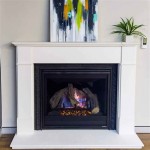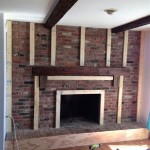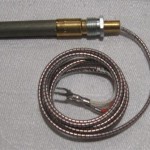Faux Logs For Fireplace: A Comprehensive Guide
Faux logs, also known as artificial fireplace logs or gas logs, serve as a popular and practical alternative to traditional wood-burning fireplaces. These manufactured logs offer the aesthetic appeal of a wood fire without the associated drawbacks, such as smoke, ash, and the need for constant tending. This article provides a comprehensive overview of faux logs, covering their types, benefits, considerations for selection, and maintenance requirements.
Types of Faux Logs
Faux logs are broadly categorized based on their fuel source and material composition. The most prevalent types are gas logs, electric logs, and ceramic logs. Each type presents unique characteristics catering to diverse fireplace setups and user preferences.
Gas Logs: Gas logs are designed for use in gas fireplaces, which are connected to either a natural gas line or a propane tank. They are constructed from refractory ceramic, a heat-resistant material capable of withstanding the high temperatures produced by the gas flame. Gas logs mimic the appearance of real wood, often featuring intricate details such as bark texture, knots, and charred surfaces. They provide a realistic flame pattern and offer considerable heat output, making them suitable for supplementing home heating.
Gas logs are further divided into vented and ventless options. Vented gas logs require a fully functional chimney or flue to vent the combustion byproducts outside the home. They produce a more realistic flame and higher heat output compared to ventless options. Ventless gas logs, on the other hand, do not require a chimney and are designed to burn cleanly, releasing minimal amounts of carbon monoxide. They are equipped with an oxygen depletion sensor (ODS) that automatically shuts off the gas supply if oxygen levels in the room become too low. While ventless logs offer greater installation flexibility, they produce less heat and generate more moisture inside the home.
Electric Logs: Electric logs are designed for installation in existing fireplaces or standalone electric fireplaces. They operate by simulating the appearance of flames using LED lights and a rotating reflector or projection system. While electric logs do not produce real flames or heat, they offer a visually appealing ambiance and can often be used with or without a supplemental heating function. They are typically made from molded plastic or resin and come in various styles and sizes to fit different fireplace designs.
Electric logs are easy to install and operate, requiring only a standard electrical outlet. They are a safe and convenient option for those who desire the look of a fireplace without the mess, maintenance, or safety concerns associated with traditional wood or gas fireplaces. They are also energy-efficient, consuming significantly less electricity than gas fireplaces.
Ceramic Logs: Ceramic logs, distinct from the refractory ceramic used in gas logs, are primarily decorative elements used in conjunction with other heating systems. They are often found in electric fireplaces or as stand-alone decorative pieces. These logs are made from ceramic materials molded to resemble real wood. They are chosen for their aesthetic appeal and durability, often incorporating realistic details and textures.
Ceramic logs do not produce heat on their own and are not intended for use in wood-burning fireplaces. They are typically paired with an electric fireplace insert or heater to provide both visual ambiance and warmth. Their primary function is to enhance the aesthetic of the fireplace setup, providing a realistic and attractive focal point.
Benefits of Using Faux Logs
Choosing faux logs over traditional wood-burning fireplaces offers several compelling advantages. These benefits span environmental considerations, convenience, safety, and cost-effectiveness.
Environmental Friendliness: Traditional wood-burning fireplaces contribute to air pollution by releasing particulate matter, carbon monoxide, and other harmful emissions into the atmosphere. Faux logs, particularly gas and electric options, significantly reduce these emissions. Gas logs burn cleaner than wood, and electric logs produce no emissions at all. This makes faux logs a more environmentally responsible choice for home heating and ambiance.
The use of faux logs also reduces the demand for firewood, which contributes to deforestation and habitat loss. By opting for faux logs, homeowners can help conserve natural resources and promote sustainable practices.
Convenience: Faux logs offer a level of convenience that traditional wood-burning fireplaces cannot match. They eliminate the need to gather, store, and transport firewood. There is no need to chop wood, stack it neatly, or worry about insect infestations. Faux logs also eliminate the mess associated with wood-burning fireplaces, such as ash and soot. Cleaning a gas or electric fireplace is significantly easier and less frequent than cleaning a wood-burning fireplace.
Gas logs can be ignited with the flip of a switch or the push of a button, providing instant warmth and ambiance. Electric logs offer similar convenience, with remote control operation and adjustable flame settings. This ease of use makes faux logs an attractive option for those seeking a hassle-free fireplace experience.
Safety: Wood-burning fireplaces pose several safety risks, including the potential for chimney fires, carbon monoxide poisoning, and burns from hot embers. Faux logs significantly reduce these risks. Gas logs, when properly installed and maintained, are designed to burn safely and efficiently. Electric logs eliminate the risk of fire altogether, as they do not produce real flames.
Faux logs also eliminate the risk of sparks and embers escaping from the fireplace, which can ignite nearby carpets or furniture. This makes them a safer option for homes with children or pets. The controlled and predictable nature of faux logs allows for a more secure and manageable fireplace experience.
Cost-Effectiveness: While the initial cost of purchasing and installing faux logs may be higher than that of a traditional wood-burning fireplace, the long-term cost savings can be substantial. Faux logs eliminate the need to purchase firewood, which can be expensive and time-consuming. Gas logs offer a relatively efficient heating solution, while electric logs are highly energy-efficient.
Furthermore, faux logs require less maintenance than wood-burning fireplaces. There is no need to clean the chimney regularly or repair damage caused by smoke and soot. This can result in significant savings on maintenance costs over the lifespan of the fireplace.
Considerations When Selecting Faux Logs
Choosing the right faux logs requires careful consideration of several factors, including fireplace type, fuel source, size, style, and safety features. Evaluating these factors will ensure that the selected logs meet the specific needs and preferences of the homeowner.
Fireplace Type and Fuel Source: The most important consideration is compatibility with the existing fireplace setup. Gas logs are designed for use in gas fireplaces, while electric logs are suitable for electric fireplaces or standalone use. It is crucial to ensure that the selected logs are compatible with the fuel source available, whether it is natural gas, propane, or electricity. Using the wrong type of logs can be dangerous and may damage the fireplace.
Vented and ventless gas logs offer different advantages and disadvantages, depending on the venting capabilities of the fireplace. Vented logs require a fully functional chimney, while ventless logs do not. However, ventless logs may produce more moisture and require careful monitoring of oxygen levels.
Size and Fit: The size of the faux logs should be proportionate to the size of the fireplace. Logs that are too large may block the airflow and reduce the efficiency of the fireplace. Logs that are too small may look out of place and diminish the aesthetic appeal. Measure the dimensions of the fireplace carefully before selecting the logs to ensure a proper fit.
Consider the arrangement of the logs within the fireplace. Some logs are designed to be stacked in a specific pattern, while others can be arranged more freely. Choose an arrangement that complements the design of the fireplace and provides a realistic appearance.
Style and Realism: Faux logs come in a variety of styles and finishes, ranging from rustic to contemporary. Choose a style that complements the overall décor of the room and reflects personal preferences. Consider the level of realism desired. Some logs feature intricate details such as bark texture, knots, and charred surfaces, while others have a more simplified appearance.
Pay attention to the flame pattern produced by the logs. Gas logs offer a more realistic flame pattern than electric logs, but the quality of the flame can vary depending on the design and construction of the logs. Electric logs use LED lights and reflectors to simulate the appearance of flames, and the quality of the simulation can range from convincing to artificial.
Safety Features: When selecting faux logs, prioritize safety features. Gas logs should be equipped with an oxygen depletion sensor (ODS) that automatically shuts off the gas supply if oxygen levels in the room become too low. Electric logs should have a safety shut-off feature that prevents overheating. Ensure that the logs are certified by a reputable testing agency, such as UL or CSA.
Regularly inspect the logs and fireplace for signs of damage or wear. Replace any damaged or worn parts promptly to maintain the safety and efficiency of the fireplace. Follow the manufacturer's instructions for installation, operation, and maintenance.
By carefully considering these factors, homeowners can select faux logs that provide a safe, convenient, and aesthetically pleasing alternative to traditional wood-burning fireplaces.

Faux Log Stack

Faux Log Stack

Fake Fireplace Idea When You Don T Have A Real One Faux Diy Mantels

How To Make A Faux Fireplace Insert With Real Logs Interior Frugalista

Fake Wood In Fireplace Facade Faux Diy

All About Artificial Firelogs Raleigh Nc Mr Smokestack Chimney Service

24 Cozy Faux Fireplace And Mantel Decor Ideas Shelterness

Diy Faux Wood Log Fireplace Screen A Kailo Chic Life

Fake Burning Logs For Fireplace Electric

How To Make A Faux Fireplace Insert With Real Logs Interior Frugalista
Related Posts








